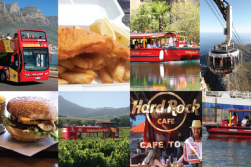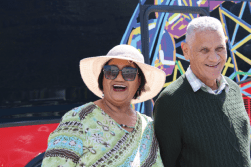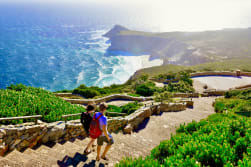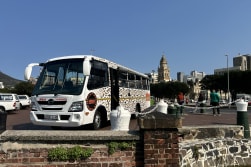6 Cape Town Museums You Do Not Know About
April 2020
With a long, rich, sordid, and yet triumphant past, Cape Town has a whirlwind of museums, memorials, heritage site,s and ruins to visit. If you know anything about Cape Town, you probably know about the Castle of Good Hope, Robben Island or the Mount Nelson Hotel, but what about some of the other historical gems dotted around the city?
We’ve found a couple of fascinating stops to visit that might not get the spotlight they deserve - but are equally as important to the long history of the Cape.
Prestwich Memorial
Located in the historical neighbourhood of De Waterkant (Stop 4 and 5), once known as District One, was a Dutch Reformed cemetery during the 17th and 18th centuries, holding unmarked graves for those not deemed worthy of a proper burial. This included slaves, sailors, the poor, and indigenous Khoi, and those executed by the Dutch settlers.
The Prestwich Memorial and Memorial Gardens were established after over 2 000 graves were uncovered while excavating for urban development in 2003, to pay homage to those who lost their lives centuries ago.

Prestwich Museum
The Memorial holds an ossuary in which the exhumed bones are preserved, as well as interpretive displays that celebrate the historical heritage of the Western Cape, the story of District One, the history of slavery, forced removals and the apartheid regime.
Cape Medical Museum
The Cape was one of the first countries in Africa to be colonised by Europe, therefore creating a portal for the advancement of western medicine through southern Africa. This became an important shift in the history of modern medicine, particularly as it emphasises both western and traditional medicine in the Cape.
The Cape Medical Museum (Stop 1) is housed in the New Somerset Hospital, built-in 1859 as the Old City Hospital for contagious diseases, and nowadays exhibits a historical account of the medical world since the early 19th century. Its displays include fascinating relics from the early days of pioneering modern medicine, including turn-of-the-century reconstructions of consulting rooms, a dispensary, dentist’s room and operating theatre.
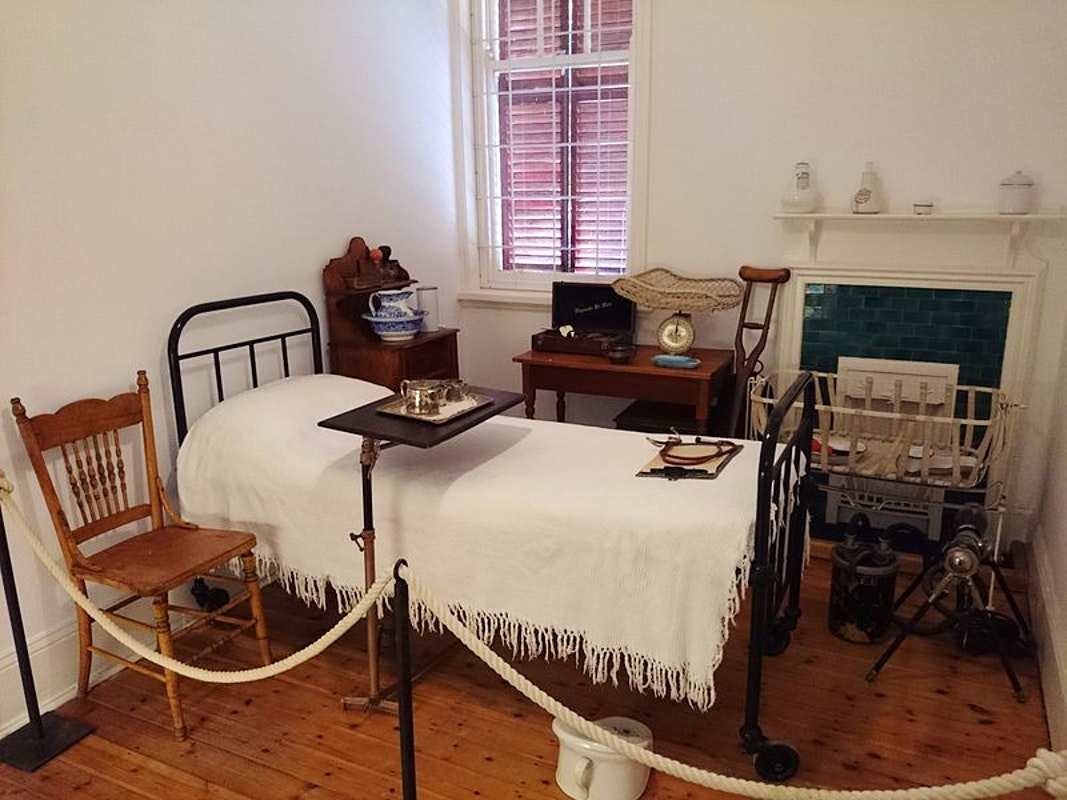
Cape Medical Museum
The museum offers guided tours, slide shows, educational programmes, lectures and presentations, and other archival material.
The Heart of Cape Town Museum
Cape Town is the famed destination of the world's first successful heart transplant, pioneering the medical world into a new frontier. Regarded as one of the greatest moments in medical history, the Heart of Cape Town Museum is dedicated to the world’s first successful heart transplant and honours everyone who played a major role in a surgical feat.
The displays in the Groote Schuur Hospital, which was founded in 1938, are made up of fully restored, original operating rooms laid out as they were on the day of the operation. It also includes a timeline of events that led up to the operation, and exhibitions honouring the famed surgeon, Christiaan Barnard, the patient Louis Washkansky, and the donor Denise Darvall.

Heart of Cape Town Museum
This museum is not on one of our direct routes, but a free shuttle is available to transport you between your hotel and the museum.
Cape Town Diamond Museum
Dedicated to creating a new appreciation of diamonds, the Cape Town Diamond Museum (Stop 2) was donated by acclaimed jeweller Yair Shimansky to pay tribute to the world’s most precious gem, the diamond.

Diamond Museum
South Africa became one of the world’s top diamond-producing countries, and its wealthy contribution changed the world diamond industry forever. Here you can witness a 3.3 billion-year-old story unfold from its creation at the core of the Earth, to the mine, and eventually, to the completed polished stone set in your precious jewellery creation.
Learn about the diamond industry, the history of diamonds, South African diamonds, and the history of the South African diamond rush. See preserved mining gear, historical artifacts, and famous diamond replicas like The Cullinan, The Hope, and The Taylor-Burton diamonds.
Chavonnes Battery Museum
Built in 1724 by the Dutch East India Company (VOC), Chavonnes Battery (Stop 2) was a coastal fortification linked to the Castle of Good Hope, where cannons used to be fired to repel hostile ships. This 200-year-old coastal fortification is Cape Town's oldest major fortification after the castle, known as the Watchdog of Table Bay from 1714.
Unearthed during development in the 1990s, much of Chavonnes Battery was unfortunately demolished in 1860 to help build the Alfred Basin, but the remains have now been carefully excavated.

Chavonnes Battery
Now a museum, it tells a tale of postal stones, seafarers, shipwrecks, explorers, convicts, slaves, soldiers, and the burghers of the Cape, and hosts contemporary art exhibitions, offers guided tours, venue hire and even cannon firing.
Bo-Kaap Museum
This well-known area of the city is a historic area that became home to many Muslims and freed slaves after the abolition of slavery, dating back to 1768.
Still standing in its original form, the building was declared a National Monument in 1965 and restored in the 1970s. Housed in what is known as the oldest house in Bo-Kaap (Stop 6), the Bo-Kaap museum is furnished with original 19th-century antiques to depict the lifestyle of a Muslim family at the time.
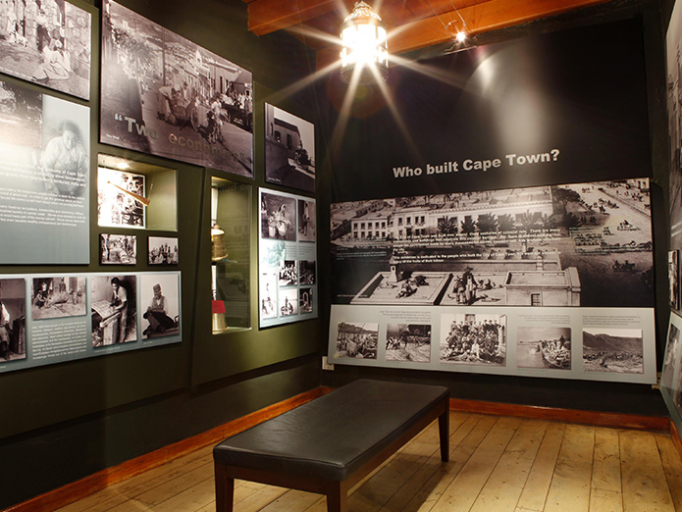
Bo-Kaap Museum
The museum documents the history of the Cape Malay people and their contribution of skilled craftsmen and scholars to the Cape, and photographs and pictures depicting the lifestyle of this community are exhibited along with other items of interest, such as the Cape fish-vendor’s horn.
So, let us join you on your journey while you visit one of these hidden gems and discover something new.
Cape Town Museums FAQs
What is the Cape Medical Museum and what will I see?
It’s a small medical-history museum with reconstructed consulting rooms, a dispensary, a dentist’s room, and an early operating theatre, plus guided tours and educational programmes. It’s housed inside the historic hospital complex in Green Point.
Is there a medical museum in Cape Town near the Hop-On Hop-Off route?
Yes. The Cape Medical Museum is near Stop 1 and showcases medicine at the Cape from the early 19th century onward, with artifacts and period room setups.
What is the Chavonnes Battery Museum about?
It’s a coastal fortification from 1724 that was excavated during waterfront development. The museum covers Cape seafaring, shipwrecks, soldiers and settlers, and hosts guided tours, exhibitions, and even cannon firing.
Is there a Groote Schuur Museum linked to the first heart transplant?
Yes. The Heart of Cape Town Museum at Groote Schuur Hospital preserves the original operating rooms and tells the story of the world’s first successful heart transplant and the people involved.
Is the Cape Medical Museum in the Old Somerset Hospital?
The museum is housed in the New Somerset Hospital building (built in 1859), which is sometimes confused with “Old Somerset Hospital” in searches.

